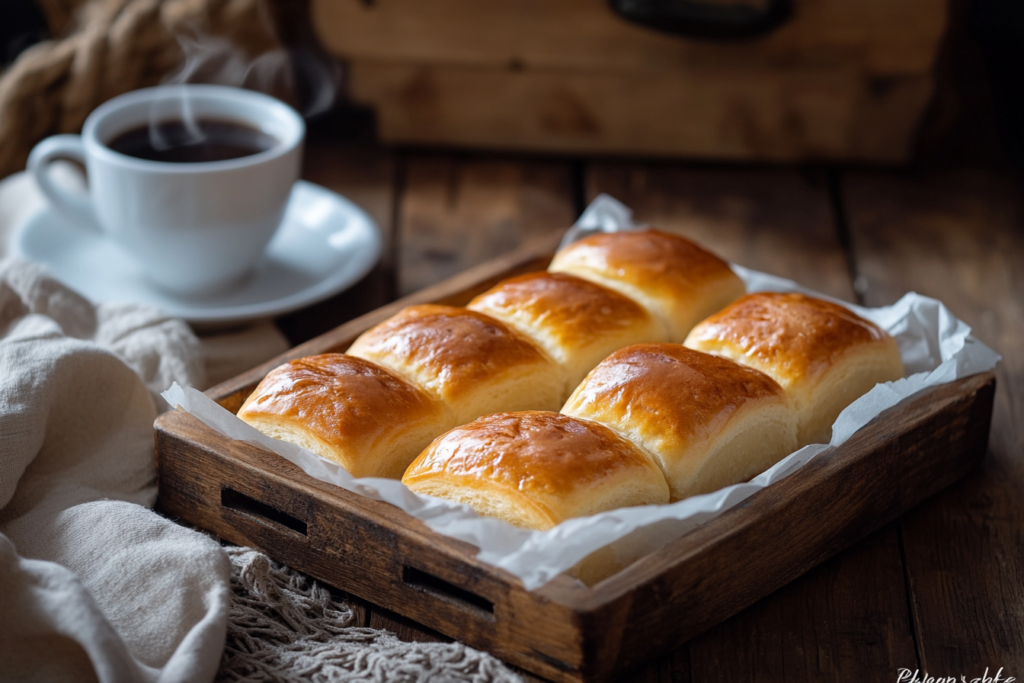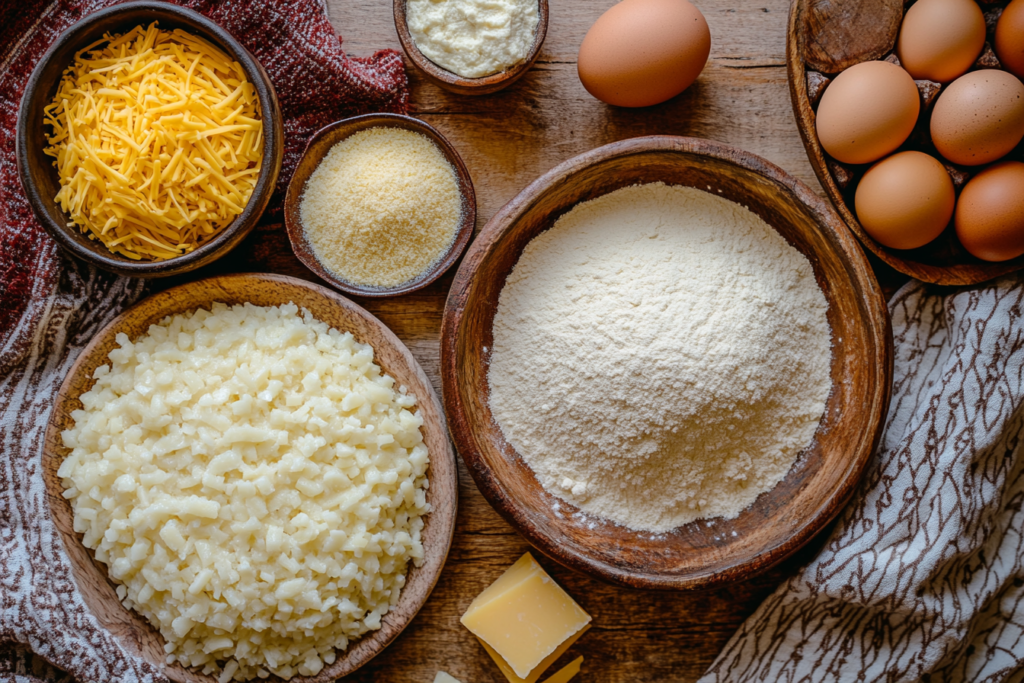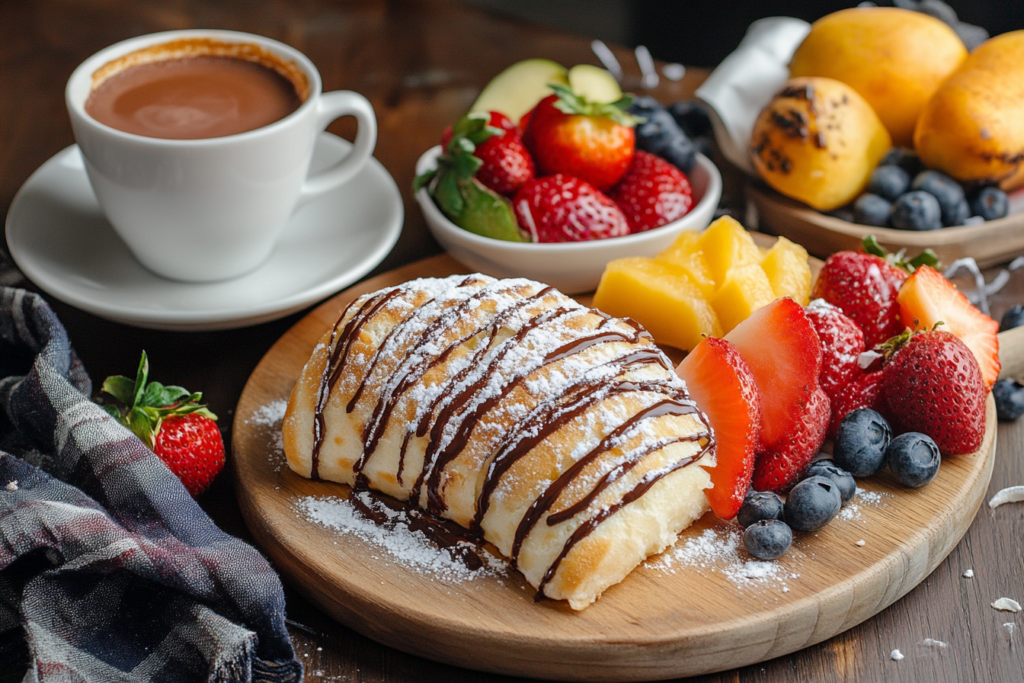
Pandebono is widely regarded as a beloved Colombian bread, celebrated for its unique, cheesy flavor and slightly chewy texture. It is commonly enjoyed in Colombian households, often freshly baked and paired with a hot cup of coffee or chocolate. This traditional treat is recognized for its rich history and famed simplicity, as only a few ingredients are required to achieve its iconic taste.
But what exactly is pandebono made of? In this article, we’ll explore its key ingredients, variations, and preparation methods, so you can understand why this bread has captured the hearts of so many.
Ingredients of Pandebono
Main Ingredients
At its core, pandebono consists of four main ingredients: yuca flour, cheese, eggs, and cornmeal. These ingredients combine to create the perfect balance of flavors and textures. Each component plays a vital role in shaping the final product, from the dough’s elasticity to its rich, cheesy aroma.
Traditional vs. Modern Variations
While traditional recipes stay true to these core ingredients, some modern versions may include additions like milk, butter, or sugar for a slightly different taste or texture. Regional preferences also influence the recipe, leading to variations that give this bread its versatility.
Core Ingredients
Yuca Flour
Yuca flour, also known as cassava or tapioca flour, comes from the gluten-free starch extracted from yuca. This ingredient gives pandebono its signature chewy texture. Cassava is a staple crop in many parts of South America, making it a natural choice for traditional Colombian recipes.
Cheese
Cheese is the star of pandebono, providing its rich, salty flavor. In Colombia, people commonly use quesito or costeño cheese for its mild, crumbly texture. Outside Colombia, substitutes like feta or farmer’s cheese work well. The cheese melts slightly during baking, giving pandebono its irresistible flavor.
Eggs
Eggs bind the dough together and help create a soft, fluffy interior. They also contribute to the golden color of the bread once baked. Without eggs, pandebono wouldn’t achieve its signature texture.
Cornmeal
Cornmeal adds structure and a slight crunch to the dough. This ingredient also enhances the bread’s flavor, complementing the saltiness of the cheese. In some recipes, finely ground cornmeal is used to ensure a smoother texture.
Optional Additions
Milk
Some recipes call for milk to make the dough softer and easier to handle. Milk also adds a subtle creaminess to the flavor profile.
Butter
Butter isn’t always part of the traditional recipe, but when included, it makes the bread richer and more indulgent.
Sugar
For those who prefer a sweeter version, adding sugar to the dough creates a delightful balance between savory and sweet. This variation is popular for breakfast or as a dessert.

How Pandebono Is Made
Mixing the Ingredients
To make pandebono, combine yuca flour, cornmeal, grated cheese, and eggs in a mixing bowl. Blend the ingredients until a smooth dough forms. If the dough feels too dry, add a splash of milk to bring it together.
Shaping the Dough
Once the dough is ready, divide it into small portions and roll each one into a ball. Shape the balls carefully to ensure even baking.
Baking the Bread
Place the dough balls on a baking sheet and bake them in a preheated oven at 375°F (190°C) for 15–20 minutes. The bread is done when it puffs up slightly and turns golden brown.
Regional Differences
In Colombia, the recipe for pandebono is known to vary depending on the region. For example, in the Valle del Cauca region, where the bread is believed to have originated, it is typically made with a specific type of cheese called queso costeño, characterized by its slightly salty taste. In other regions, different local cheeses may be used, or the proportions of yuca flour and cornmeal are adjusted to achieve a firmer or softer texture.
Some regions even add a hint of anise for a subtle licorice-like flavor, giving the bread a unique twist that reflects local tastes. These variations highlight the diversity of Colombian culinary traditions.
Modern Takes on Pandebono
Modern chefs and home bakers have found creative ways to reinvent pandebono. Some versions incorporate ingredients like herbs, spices, or additional cheeses for extra flavor. Others experiment with different shapes, such as flattening the dough into discs or twisting it into fun patterns.
In international settings, people adapt pandebono to accommodate local ingredients. For example, they sometimes use parmesan or mozzarella cheese instead of traditional Colombian cheeses. Despite these changes, pandebono retains its essence as a cheesy, comforting bread that’s hard to resist.
Exploring the Cultural Significance of Pandebono
Pandebono isn’t just a type of bread—it’s a piece of Colombian culture that embodies history and tradition. People trace its origins to the Valle del Cauca region in western Colombia. The name itself has an interesting backstory: some attribute it to the phrase “pan de bono,” which means “good bread,” while others credit a local baker who first popularized the recipe.
In Colombia, pandebono is more than a snack. It’s a symbol of home and comfort. Families often gather to enjoy freshly baked rolls during breakfast or snack time, creating moments of togetherness. Additionally, pandebono plays a key role in Colombian gastronomy, frequently featured in bakeries, street stalls, and homes across the country.
Modern Pandebono and Global Popularity
As Colombian cuisine has gained recognition worldwide, so has pandebono. Today, you’ll find this iconic bread in Colombian bakeries and restaurants around the globe, from the United States to Europe and beyond. People often serve it alongside other classic Colombian treats like arepas, almojábanas, and buñuelos, introducing new audiences to the diverse flavors of Colombia..
The gluten-free aspect of pandebono has also made it increasingly popular among people seeking alternatives to wheat-based bread. Its simple ingredient list and quick preparation make it accessible to home cooks, further boosting its appeal.
Nutrition Facts
Key Nutritional Benefits
Pandebono is not just delicious—it can also be a nutritious snack. Thanks to its yuca flour base, it’s naturally gluten-free, making it an excellent option for people with gluten intolerance. Additionally, the cheese in pandebono provides a good source of protein and calcium, which are essential for strong bones and muscles.
Calories and Serving Sizes
One serving of pandebono typically contains around 120–150 calories, depending on the size and ingredients used. It’s best enjoyed in moderation as part of a balanced diet. A serving size is usually one or two small rolls, perfect for a quick snack or complement to a meal.
The Science Behind Pandebono’s Unique Texture
One of the most fascinating aspects of pandebono is its chewy and slightly springy texture. This distinctive quality comes from the combination of yuca flour (also known as cassava or tapioca flour) and cheese. Let’s break down the science behind these key ingredients.
The Role of Yuca Flour
Yuca flour is made from the cassava root and is naturally gluten-free. Unlike wheat flour, it doesn’t contain gluten, which means it doesn’t form the same stretchy networks when mixed with liquids. However, the starch in yuca flour is highly absorbent, allowing it to bind well with the moisture from eggs and cheese. This results in a dough that holds its shape and develops a chewy texture after baking.
The Role of Cheese
Cheese is not just about flavor—it’s also a critical textural element in pandebono. As the bread bakes, the cheese melts and integrates into the dough, creating pockets of gooeyness and contributing to the soft yet slightly dense interior. The salt in the cheese also enhances the overall taste, making each bite irresistible.
Eggs as a Binder
Eggs are essential in pandebono recipes because they act as a natural binder, holding the ingredients together. They also provide structure, helping the bread rise slightly during baking while maintaining its characteristic denseness.
Cornmeal’s Contribution
Cornmeal adds a touch of grainy texture to pandebono, complementing the smoothness of the yuca flour. This ingredient helps balance the bread’s overall mouthfeel and provides a mild, nutty flavor that works harmoniously with the cheese.
Together, these ingredients create a bread that is as scientifically interesting as it is delicious, making pandebono a perfect fusion of culinary art and food science.
Serving Pandebono
Typical Pairings
Pandebono is often paired with hot beverages for a comforting and satisfying treat. The most traditional options include:
- Coffee: The slight bitterness of Colombian coffee pairs beautifully with the salty-sweet flavor of pandebono.
- Hot Chocolate: A sweet, creamy drink like hot chocolate enhances the cheesy richness of the bread.
- Aguapanela: This traditional Colombian drink, made from sugarcane, provides a sweet and tangy contrast to the bread.
Occasions for Serving
Pandebono is incredibly versatile, and people can enjoy it at any time of day. They commonly serve it:
- For Breakfast: Freshly baked pandebono is a popular choice for a quick, filling breakfast.
- As a Snack: Its portability makes it an ideal mid-morning or afternoon snack.
- During Gatherings: Pandebono is a staple at Colombian celebrations, often served alongside other traditional dishes.

Frequently Asked Questions
What Does Pandebono Taste Like?
Pandebono has a savory, cheesy flavor with a hint of sweetness from the cornmeal. Its texture is light, airy, and slightly chewy, making it an irresistible treat. Learn more about its rich flavors in the article Indulge in Pandebono: The Heartwarming Taste of Colombia.
Is Pandebono Gluten-Free?
Yes! Since yuca flour and cornmeal make up its ingredients, pandebono is naturally gluten-free, offering a great option for people avoiding gluten. Explore other naturally gluten-free recipes in Delicious Crescent Roll Breakfast Recipes.
Can You Make Pandebono at Home?
Absolutely! With just a few ingredients and basic kitchen tools, you can easily make pandebono at home. It’s a beginner-friendly recipe that doesn’t take much time. If you’re new to baking, start with a simple and flavorful guide like Easy Pollo Asado Recipe: Juicy and Flavorful Chicken.
How Long Does Pandebono Stay Fresh?
Pandebono is best enjoyed fresh out of the oven, but you can store it in an airtight container for up to 2 days. To refresh its texture, simply reheat it in an oven or toaster. For tips on storing baked goods, read Hotcake Mix Recipe: Fluffy Pancakes Made Easy.
Can You Freeze Pandebono?
Yes, pandebono freezes well. Place the unbaked dough balls on a tray, freeze them until solid, then transfer them to a freezer bag. When you’re ready to bake, just pop them in the oven—no need to thaw. Check out other freezing tips in Homemade Chicken Apple Sausage Recipe.
Conclusion
Pandebono is more than just a bread—it’s a taste of Colombia’s rich culinary heritage. With its cheesy flavor, soft texture, and gluten-free ingredients, it’s no wonder this humble bread has become a favorite among locals and food lovers worldwide.
Whether you’re savoring it with a hot drink, making it at home, or discovering its regional variations, pandebono is a treat worth trying. So why not dive into Colombian cuisine and enjoy a warm, freshly baked pandebono?
